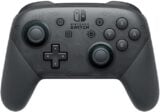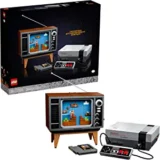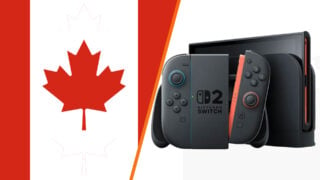Super Mario Kart November 1991 Prototype!!
— MrL314 💚 (#SMKDX) (@LF_MrL314) July 28, 2021
After 9 long months, my repair of this prototype can now be experienced! This build contains a TON of really cool, unused, and never before seen features!
Download and check out the repair here:https://t.co/Q11J0AgblV
Have fun! :D 💚 pic.twitter.com/7Y7Fxqqu6U
An early version of Mario Kart has been released, including a track editor
The November 1991 build is from nine months before the game was released

A community modder has repaired and released an early prototype of Nintendo’s SNES classic Super Mario Kart.
The iconic racing game was released in Japan on August 27, 1992, but this prototype build was compiled on November 7, 1991, more than nine months earlier.
The prototype was originally leaked online last year as part of the so-called Nintendo ‘Gigaleak’, but couldn’t be played at the time.
However, Super Mario Kart hacker MrL314 has spent the last nine months repairing the prototype and has now released the prototype build in a playable state.
Speaking with VGC, MrL314 told us that the process was a lengthy one. They explained: “It was definitely a difficult task, starting off with basically a black screen that would just crash.
“It took a ton of research and testing, and putting a lot of knowledge about the SNES to get things working again. The biggest help was documentation of the SNES, done over the years by many hardworking people.
“Finishing up the repair was a great way to reflect on how far I’ve come from just being a kid with a controller and a dream of making games.”
As seen in the footage on this page, the restored prototype even features the official, never-before-seen track editor used by Nintendo to create the original Super Nintendo game, allowing users to place items on a track such as speed boosts and blocks.
The Super Mario Kart editors allowed Nintendo to work directly on the SNES console and place data precisely, the modder explained. Once the data was in the editor, it could be tested out directly in-game by saving to the SRAM chip within the game cartridge.

While fan-made track editors have existed in the past, this is the first time players have been able to edit tracks just like Mario Kart’s creators did to build the game.
The prototype includes different track layouts than those included in the final game, such as a version of Ghost Valley without any walls and a Mario Circuit 2 variant which features multiple jumps.
In addition, the build contains a Battle mode in which players fire projectiles instead of collecting items. This early version of the mode was originally mentioned by the developers in a 1992 interview.
There are even some features that ended up appearing in future Mario Kart games, such as a Mario Kart 64-style racing sidebar and different camera angles which look similar to Mario Kart DS’s map style.
MrL314 gave us a list of some of the more interesting features in the prototype:
- Track AI Zone editor
- Track overlay (item box and speed boost) editor
- Mario Kart 64 style racing sidebar (you get to see the positions change live)
- Different camera modes (two of which look very similar to Mario Kart DS’s map style)
- In-game Memory Viewer / Editor
- Some tracks originally were very different!
- Ghost Valley doesn’t have walls
- Ghost Valley 2 has two sets of split paths
- Mario Circuit 2 had 2 jumps(!)
- Mario Circuit 4 had a jump
- Battle mode is incomplete but has 2 unseen versions
- one mode contains some coins randomly moving around the screen (similar to Coin Runners later in the series)
- the other mode is the “machine gun” mode originally mentioned by the developers in a 1992 interview
- There is a 3D coin item that later in development was downgraded to a regular disposable
- Instead of Thwomps, Bubbles (or Podoboos) were used for Bowser Castle
More details on the November 1991 prototype can be found on The Cutting Room Floor, in a page MrL314 also wrote.
Anyone who wishes to try the prototype will have to repair their own version of the game ROM, and will need to run it on the BSNES emulator (it currently doesn’t work on any other emulator or real hardware).
The repair files and instructions can be found on MrL314’s GitHub page.
Eventually, MrL314 said he plans to fix the editor functionality in other leaked (and more complete) Mario Kart builds too, so fans can get creating like Nintendo’s original developers did.
“Nowadays, this feature isn’t as important for the SMK hacking community, as most of the functionality from the editor modes is handled in software like Epic Edit by stifu,” he said.
“However, it does give a good glimpse into how the original developers made the game! I’ve also personally challenged the SMK Workshop community to make a Super Mario Kart hack without using modern hacking tools, and develop like Nintendo would have in the 90s.”















